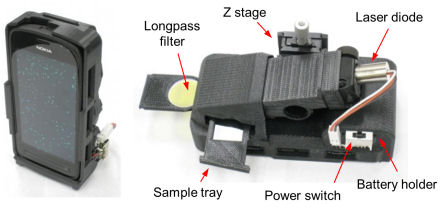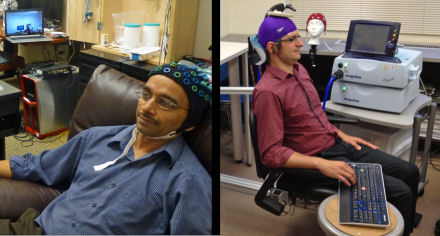
Centimeter-accurate positioning systems are already used in surveying and mapping, but the antennas these systems employ are too large and costly for use in mobile devices. Now, however, University of Texas scientists have devised a powerful and sensitive software-defined GPS receiver that can extract centimeter accuracies from the inexpensive antennas found in mobile devices. The new software is described in the latest issue of the journal GPS World.
Lead researcher Todd Humphreys said the software could revolutionize geolocation on virtual reality headsets, cellphones, and other technologies, making global positioning and orientation far more precise than what is currently available on a mobile device.
“The system could allow unmanned aerial vehicles to deliver packages to a specific spot on a consumer’s back porch, enable collision avoidance technologies on cars, and allow virtual reality headsets to be used outdoors,” said Humphreys.
The new centimeter-accurate GPS coupled with a smartphone camera could also be used to quickly build a globally referenced 3-D map of one’s surroundings that would greatly expand the radius of a virtual reality (VR) game. Currently, VR does not use GPS, which limits its use to indoor environments and usually a two- to three-foot radius.
“Imagine games where, rather than sit in front of a monitor and play, you are in your backyard actually running around with other players,” Humphreys suggested. “To be able to do this type of outdoor, multiplayer virtual reality game, you need highly accurate position and orientation that is tied to a global reference frame.”
The system itself reduces location errors from the size of a large car to the size of a nickel – a more than 100 times increase in accuracy. The breakthrough by Humphreys and his team is software that can extract centimeter accuracies – using so-called carrier phase measurements – from the inexpensive antennas found in mobile devices. The software, known as GRID, currently operates outside the phone, but it will, according to Humphreys, eventually run on the phone’s internal processor.
Humphreys said the system will deliver precise position and orientation information – how one’s head rotates or tilts – to less than one degree of measurement accuracy. This level of accuracy could enhance VR environments that are based on real-world settings, as well as improve other applications, including visualization and 3-D mapping.
Related:
Discuss this article in our forum
Decoded smartphone movements reveal transport mode
GPS location systems under increasing attack
Researchers hack and commandeer drone
Cheap-and-cheerful spectrometer for cell phones









Comments are closed.